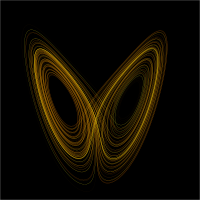
Photo from wikipedia
Natural and engineered networks, such as interconnected neurons, ecological and social networks, coupled oscillators, wireless terminals and power loads, are characterized by an appreciable heterogeneity in the local connectivity around… Click to show full abstract
Natural and engineered networks, such as interconnected neurons, ecological and social networks, coupled oscillators, wireless terminals and power loads, are characterized by an appreciable heterogeneity in the local connectivity around each node. For instance, in both elementary structures such as stars and complex graphs having scale-free topology, a minority of elements are linked to the rest of the network disproportionately strongly. While the effect of the arrangement of structural connections on the emergent synchronization pattern has been studied extensively, considerably less is known about its influence on the temporal dynamics unfolding within each node. Here, we present a comprehensive investigation across diverse simulated and experimental systems, encompassing star and complex networks of Rössler systems, coupled hysteresis-based electronic oscillators, microcircuits of leaky integrate-and-fire model neurons, and finally recordings from in-vitro cultures of spontaneously-growing neuronal networks. We systematically consider a range of dynamical measures, including the correlation dimension, nonlinear prediction error, permutation entropy, and other information-theoretical indices. The empirical evidence gathered reveals that under situations of weak synchronization, wherein rather than a collective behavior one observes significantly differentiated dynamics, denser connectivity tends to locally promote the emergence of stronger signatures of nonlinear dynamics. In deterministic systems, transition to chaos and generation of higher-dimensional signals were observed; however, when the coupling is stronger, this relationship may be lost or even inverted. In systems with a strong stochastic component, the generation of more temporally-organized activity could be induced. These observations have many potential implications across diverse fields of basic and applied science, for example, in the design of distributed sensing systems based on wireless coupled oscillators, in network identification and control, as well as in the interpretation of neuroscientific and other dynamical data.
Journal Title: IEEE Access
Year Published: 2019
Link to full text (if available)
Share on Social Media: Sign Up to like & get
recommendations!